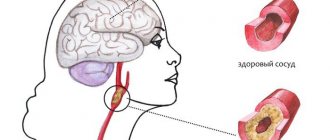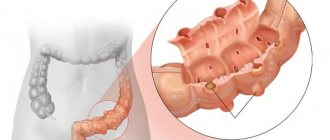Hepatomegaly is a clinical syndrome characterized by liver enlargement. In a healthy adult, the lower edge of the liver coincides with the edge of the costal arch. If during palpation and percussion (tapping) the edge of the liver is below the ribs, this is regarded as hepatomegaly.
Normal dimensions of the adult liver upon percussion: 6–12 cm along the midclavicular line and 4–8 cm along the midsternal line1. In people with an asthenic body type, the size of a normal liver is usually smaller than in people with a picnic (dense) body type2.
Criteria for defining hepatomegaly
We are already so accustomed to the most objective assessment of the size of the liver based on the results of ultrasound or computed tomography that we forget that the first signs of hepatomegaly are determined by the attending physician using the ancient methods of palpation and percussion.
Normally, when examining an adult by percussion, the diameter of the organ along the right midclavicular line should not exceed 12 cm. The lower edge of the right lobe can be palpated in incomplete people; it is soft and slides along the doctor’s fingertips.
In relation to the right costal arch, a protrusion of 1–2 cm is allowed. This is typical for people of asthenic physique. The left lobe of the liver is not palpable. It is located in the upper part of the epigastrium behind the stomach. If a dense formation can be identified in this area, then hepatomegaly can be suspected.
To be sure that the liver is enlarged, the doctor needs to exclude prolapse of the organ in chronic bronchitis and severe pneumosclerosis. An unclear compaction due to a tumor of the kidney, intestines, or enlarged gallbladder may be mistaken for the right lobe of the liver.
In addition to the size, the doctor pays attention to the shape and density of the edge (sharp, rounded, “rocky,” “lumpy,” soft), and the presence of pain during palpation.
What causes the pathology?
The causes of hepatomegaly are very diverse. They are associated both with diseases of the liver itself and with other pathologies. Most often, organ enlargement is caused by the following liver diseases:
- viral and non-viral hepatitis;
- hepatosis (fatty hepatosis is a common pathology in obese people), alcoholic and non-alcoholic fatty degeneration;
- tumors (adenoma, hemangioma, carcinoma, cancer metastases from other organs, focal hyperplasia);
- formed cysts;
- amyloidosis;
- liver enzymopathy (with lysosomal lipase deficiency, hepatomegaly appears in 87% of cases);
- Gaucher disease, which causes fat accumulation;
- cirrhosis with irreversible fibrotic disorders with necrosis of hepatocytes;
- thrombosis of the hepatic veins, blockage of the bile ducts due to inflammation of the bladder.
Hepatomegaly is caused by chronic infections and intoxications. The liver ensures the neutralization of toxic substances and poisons; some pathogens “settle” directly inside the organ: with malaria, echinococcosis, granulomatous hepatitis develops with tuberculosis, sarcoidosis, cytomegalovirus infection, mononucleosis, septic pericarditis.
With decompensation of cardiac activity in the liver, venous blood of the inferior vena cava system is retained, the organ swells, a long process causes compression of hepatocytes and their necrosis, followed by replacement with fibrous tissue, cardiac cirrhosis of the liver is formed
Since the liver suffers from pathology associated with metabolic disorders, hepatomegaly is found in hemochromatosis (iron deposition in cells), Wilson-Konovalov disease (copper particles are found in hepatocytes).
Decompensation of cardiac activity caused by right ventricular failure contributes to overflow and increased pressure in the inferior vena cava and its basin. A congestive type of hepatomegaly is observed:
- with the consequences of acute myocardial infarction;
- myocardial dystrophy;
- cardiomyopathies;
- heart defects.
Hepatomegaly is most pronounced in malignant tumors of the lymphatic system (leukemia, leukemia). In this case, foci of additional extramarrow hematopoiesis are formed in the liver or the tissue is saturated with lymphoblastic cells. The liver reaches enormous sizes, occupies most of the abdominal cavity, and its weight reaches 20 kg.
What complications can there be?
Changes in the size of the organ and its parenchyma do not go away on their own. The following pathologies are most likely.
- - Liver failure.
- - Internal bleeding.
- - Cirrhosis.
- - Severe forms of hepatitis.
- — Uncontrolled fatty hepatosis.
Often the syndrome becomes chronic, which requires maintenance therapy throughout the patient’s life.
Good news! By following a reasonable diet (which is good for the liver) and regularly supporting the intestinal microflora, routinely eliminating bile stagnation, and supporting hepatocytes with natural remedies, the size of the gland can be reduced.
How does hepatomegaly syndrome manifest?
During examination, the doctor identifies signs of hepatomegaly and interprets them in favor of one or another diagnosis. For example,
- the “stony” consistency of the edge of the liver, the bumpiness of the surface indicate the likelihood of cirrhosis or a tumor (new cells grow faster, so bumps form);
- pain on palpation is more typical for hepatitis (inflammation), moderate sensitivity of the edge is observed with steatosis;
- rapid enlargement of the organ is typical for the development of cardiac decompensation, with the capsule stretching, which is accompanied by pain;
- The course of liver abscess and hydatid cyst is distinguished by severe pain.
Pain in the liver area
With a significant enlargement of the liver, the patient experiences the following symptoms of hepatomegaly:
- heaviness, constant bursting pain under the ribs on the right or in the epigastrium, radiating to the side, right side of the abdomen, intensifying with movements;
- an increase in abdominal volume due to the accumulation of fluid in the abdominal cavity (ascites);
- itchy skin rashes;
- yellowing of the sclera and skin;
- nausea, heartburn;
- bowel dysfunction (alternating diarrhea and constipation);
- small angiomas on the skin of the face, chest, abdomen in the form of “spiders” or spider veins.
Jaundice is one of the possible symptoms of pathology
Specific symptoms depend on the cause of hepatomegaly. With hepatitis, the patient's liver enlarges evenly, a thickening appears, which is felt along the lower edge. Palpation is painful. There is yellowness of the skin, signs of general intoxication and inflammation (fever, weakness, headaches, dizziness).
Treatment of hepatomegaly caused by viral hepatitis requires antiviral agents and immunostimulants. With good efficiency, the liver returns to normal size. Cirrhosis differs from hepatitis in the mechanism of destruction of liver tissue. Due to diffuse changes in the liver with areas of necrosis, working hepatocytes are replaced by scar tissue.
Impaired functions are accompanied by a tendency to bleeding, the skin takes on an earthy tint, and ascites grows due to portal hypertension. An expanded venous ring with outgoing vessels in the form of a “jellyfish head” appears around the navel.
In metabolic disorders characteristic of metabolic diseases, fermentopathy, along with hepatomegaly, the following is detected:
- damage to the kidneys and spleen (glycogenosis);
- copper deposits and a colored ring around the iris, hand tremors (Wilson-Konovalov disease);
- yellow-brown spots on the body and xanthelasmas on the eyelids, the connection of clinical manifestations with a period of fasting (pigmented hepatosis in Gilbert's syndrome);
- cough with hemoptysis (hemochromatosis).
In the patient, the signs of heart disease come first: shortness of breath, swelling in the legs, ascites, palpitations and arrhythmia, angina-type pain, cyanosis of the feet, hands, lips, and in children - the nasolabial triangle.
Prevention
Prevention of the condition is also divided into a set of measures depending on the cause of the syndrome. But, in general, you can draw up the following set of rules:
- A healthy lifestyle - nothing destroys the liver (likewise other organs and systems) as much as alcohol, smoking and drugs. Therefore, in order to protect the organ from dangerous diseases, you need to recover from these addictions or, better yet, not even try them.
- Prevention of viral hepatitis - hepatitis viruses also have an equally destructive effect on organ tissues. Preventive measures exclude any contact with someone else’s blood, require extremely thorough disinfection of reusable items that come into contact with human secretions and injure the skin, and are also carried out through protected sexual contact.
- Preventive measures to prevent fatty hepatosis: lead an active lifestyle, walk in the fresh air more often and eat well.
- Adequate and exclusively prescription medications, because Many drugs, when taken in the wrong dosage, have a detrimental effect on the liver.
- Rational, proper nutrition, excluding animal fats, but presupposing nutrition according to dietary table No. 5.
- Strong physical activity.
Can hepatomegaly develop in only one lobe of the liver?
The liver consists of two lobes, each with its own innervation, blood supply, and bile ducts (central artery, vein, bile duct). Isolated hepatomegaly of the right lobe of the liver is observed more often than the left. Functionally, the right lobe is loaded more, performing 60% of the organ’s work, so any violations primarily affect it.
The left lobe is rarely affected; it is located closer to the pancreas; therefore, pancreatic disorders can cause an increase in the lobe
The examination usually reveals damage to the gallbladder and ducts, and the spleen.
With uneven enlargement of the organ, they speak of partial hepatomegaly. The lower edge of the liver rarely changes, so ultrasound is necessary for detection. A characteristic echo sign is a change in the homogeneity of the tissue structure. Usually found in tumors, cysts, and abscesses.
How is an enlarged liver and spleen combined?
An enlarged spleen (splenomegaly) may accompany hepatomegaly. It has been noticed that these two signs of pathology support each other. A simultaneous increase is expressed in hepatolienal syndrome. It is more typical for children, since it is aggravated by the anatomy and physiology of the growing organism.
It is provoked by hereditary diseases, infections, congenital anomalies. The syndrome is observed:
- for vascular diseases of the arteries and veins of the liver, spleen (vasculitis, thrombosis);
- chronic focal and diffuse liver pathology;
- hemochromatosis;
- liver amyloidosis;
- Gaucher's disease;
- hepatocerebral dystrophy.
Chronic parasitic and infectious diseases always, in addition to the liver, affect the spleen (intestinal tuberculosis, alveococcosis, malaria, infectious mononucleosis). Both organs are significantly enlarged with pathology of lymphoid tissue and blood (leukemia, lymphogranulomatosis, hemolytic anemia). Heart disease is less likely to promote spleen growth.
The main task of diagnosis is to identify the common cause that caused hepatomegaly and splenomegaly.
Organs have a pronounced functional connection
Patient, the course is completed!
Hepatomegaly is a disease that can and should be cured. The main thing is not to start it if you find similar symptoms. Our task was to provide you with the most complete and reliable knowledge about this pathology. And knowledge, as we know, is power. The journey on this topic is coming to an end, and we confidently say that you have completed the theoretical course of hepatomegaly.
You must always remember that the health of every organ in your body directly depends on your lifestyle and habits. And liver health is your happy present and strong future. Be healthy!
How does hepatomegaly occur in pregnant women?
Doctors note that liver problems during pregnancy occur in the third trimester. An enlarged uterus displaces the liver upward to the right. The movements of the diaphragm are limited, which makes it difficult to remove bile and fills the liver with blood.
Hormones influence the functioning of the liver, which is manifested by yellowish spots on a woman’s face and “stars” on the skin. An increase in fatty acids, cholesterol, and triglycerides is detected in the blood of a pregnant woman.
Pathological hepatomegaly can be caused by:
- toxicosis with prolonged vomiting, observed in 2% of pregnant women from the fourth to the tenth week, stops by the twentieth week, due to vomiting, dehydration, electrolyte disturbances can occur, and the woman’s weight decreases;
- intrahepatic stagnation of bile, found in every fifth pregnant woman, the cause is associated with hereditary predisposition.
Hepatomegaly can occur during pregnancy due to exacerbation of existing chronic diseases (heart decompensation, fatty hepatosis, diabetes mellitus, neoplasms, leukemia, hepatitis)
Forecast
The medical prognosis for the life of patients with hepatomegaly is determined depending on the cause of the development of this condition. If the process is diagnosed at an early stage, the prognosis is favorable.
All known diseases leading to this condition are successfully treated, incl. and viral hepatitis C. If the patient’s underlying disease is at the progression stage, then the prognosis is relatively favorable.
A questionable prognosis in the case of hepatomegaly is given only to patients with oncological pathology at stages 2-4 of the process, as well as to patients with genetic diseases.
Hepatitis C: first signs and treatment regimen Fatty liver hepatosis: symptoms and treatment Cirrhosis of the liver Liver hemangioma - what is it? Treatment and symptoms Toxic liver hepatitis Hepatitis B
When does hepatomegaly occur in children?
Hepatomegaly in the fetus is manifested by an enlarged abdomen, which is detected on ultrasound during pregnancy. Already at this stage, doctors are trying to determine the cause; the course of pregnancy and the health of the unborn baby depend on it.
The most common are:
- intrauterine infection with viruses and bacteria (Toxoplasma, cytomegalovirus, Coxsackie, pathogens of chickenpox, rubella, syphilis, HIV), small hyperechoic inclusions are detected in the enlarged fetal liver;
- Rh conflict, when the mother’s blood is Rh negative, and the fetus accepts the father’s Rh;
- various tumor-like formations (hemangioma, hepatoblastoma, adenoma are detected in the fetus);
- increased hemolysis of red blood cells;
- heart defect with insufficiency;
- genetic manifestations of impaired metabolism;
- congenital anomalies.
Isolated fetal hepatomegaly rarely develops; more often it is accompanied by an enlarged spleen and other defects. The most successful period for detection is the II–III trimesters. Through a full examination, it is necessary to exclude Down syndrome.
In newborns and infants up to one year, a slight enlargement of the liver is considered normal. If, upon palpation, the lower edge protrudes from the hypochondrium by more than 2 cm, the condition is pathological and needs to be clarified.
Hepatomegaly syndrome can be accompanied by poor diet, complicate vaccination, and indicate autoimmune processes in the child’s body
The most common pathological causes are:
- infectious diseases, any viral infections;
- heart defects with right ventricular failure - pay attention to the baby’s heavy breathing, cyanosis of the face and limbs, tachycardia;
- diseases of the respiratory system - the child has severe shortness of breath, wheezing in the lungs;
- bile duct cysts with blockage of the bile ducts, inflammation - accompanied by high temperature, pain on palpation in the hypochondrium on the right;
- Debre's syndrome, Gierke's disease - accumulation of glycogen in the liver tissue contributes to the early development of fatty hepatosis, accompanied by convulsions, increased lactic acid content in the blood, acetoacetic acid is released in the urine;
- impaired lipid metabolism - expressed by constant diarrhea, vomiting, yellow spots on the skin;
- Mauriac's syndrome - complicates the course of diabetes, fat accumulates in the child's liver;
- tumors (hepatoblastoma, hemangioma) benign and malignant are rare.
A small child with hepatomegaly exhibits all the classic symptoms. They are difficult to tolerate. As the abdomen enlarges, the umbilical ring does not heal, and a hernial orifice is formed, through which the navel and intestinal loops protrude. Jaundice persists.
HIV-infected newborns sometimes differ from healthy children only in hepatomegaly. From an early age, frequent viral infections of the respiratory tract, mumps, dermatitis occur, lymph nodes become enlarged, and fungi affect the oral cavity. Any infection can lead to sepsis, meningitis, and anemia.
Echinococcosis affects older children. The main reason is contact with dogs. At 5–7 years of age, a moderate enlargement of the liver is observed, which is considered a physiological phenomenon and does not require intervention.
In older groups, the cause may be hepatitis (viral, toxic, drug), complications after congenital infection with herpes viruses, rubella, parasitic diseases, impaired bile outflow, biliary cirrhosis.
There may be metabolic changes in diabetes mellitus, Wilson-Konovalov disease, porphyria, liver damage caused by hemolysis, lymphoma, leukemia, tumors such as hemangioma, carcinoma with metastases.
In the presence of respiratory diseases, false hepatomegaly should be distinguished; it appears due to the pushing of the liver from under the ribs by increased airiness of the lungs
Treatment
The treatment plan for hepatomegaly is based on the results obtained after a complete examination. The main focus of therapy is the fight against symptoms and elimination of the causes that led to disturbances in liver function. One of the most important factors that positively influences the recovery process is adherence to a strict diet.
Diet
According to the generally accepted classification according to Pevzner, Table No. 5 is indicated for patients with hepatomegaly of the liver. The total number of calories in the daily diet should not exceed 2400–2900 Kcal. Of these, proteins account for 100 g, fats – 80 g, carbohydrates – 450 g.
The list of products allowed for consumption includes:
- lean meats - beef, veal, turkey, chicken fillet;
- low-fat fish varieties - hake, pike perch, pollock, pike;
- dairy and fermented milk products with a minimum percentage of fat content or completely low-fat;
- pasta from durum wheat of group A;
- cereals – oats, rice, buckwheat;
- vegetable and cereal soups;
- bread made from wholemeal flour or bran;
- biscuits and dry biscuits;
- thermally processed vegetables - especially beets, pumpkin, spinach;
- fruits;
- dried fruits – prunes, dried apricots;
- marshmallows, marmalade with natural juice;
- refined vegetable oil.
It is strictly forbidden to eat:
- alcohol;
- fatty, fried foods, as well as pickles, marinades and smoked foods;
- sweet carbonated drinks;
- legumes;
- nuts;
- coffee;
- cakes, pastries and ice cream.
How is diagnosis carried out?
The above reasons for the increase in liver size indicate the difficulty of finding the underlying disease and the importance of differential diagnosis. This means that, in addition to identifying hepatomegaly, all possible types of research are used: blood and urine tests, general tests, bilirubin, sugar, protein, liver function testing using biochemical tests for basic enzymes.
Monitoring of the blood coagulation system and enzyme immunoassay are prescribed for viral and bacterial infections. The doctor determines the estimated growth of the organ using percussion and palpation methods.
Hardware methods are much more accurate and objective: ultrasound, computed tomography and magnetic resonance imaging, radiography is less informative, scanning with preliminary administration of hepatotropic radioactive substances gives a complete picture of cell damage, and the proportion of remaining undamaged tissue can be calculated.
Modern equipment makes it possible to detect not only changes in size, but also to accurately contrast the boundaries, tissue structure, and the nature of the changes (focal, diffuse). Morphological changes can be definitively judged by examining a biopsy.
The most accessible method for the population is ultrasound; it is based on the principle of recording the reflection of a wave from a dense organ.
Ultrasound allows you to compare the structure of the liver in all zones, identify denser foci and the size of the lobes. Echoscopic observation can be thought of as a visual examination on a screen without recording. It is more important when monitoring a contracting organ (heart). The liver is examined using echographic criteria, and images are printed in different projections.
Folk remedies
Effective folk remedies that can be used in the treatment of liver hepatomegaly.
- A medicinal solution made from honey has a beneficial effect not only on the functioning of the body, but also on the liver. Every morning and before bed, drink a drink of 2 tablespoons of honey, 200 ml of warm water and 2 tablespoons of lemon juice.
- Dry motherwort with sage, add dandelion root and peony. Take chicory. Mix and add 500 ml of water. We are waiting for it to boil. Cooling - half an hour. Strain and drink.
- Pumpkin. We eat, grate, prepare porridge or juice. Some people may prefer raw pumpkin. And someone will even want to make cranberry juice.
- Beet. Here is another vegetable that is good for the liver. And the juice of raw beets is squeezed out, kept for 15–20 minutes and mixed with freshly squeezed carrot juice in a ratio of 3:10. Drink 100 ml of this juice per day. You can also add beets to salads or eat them boiled.










